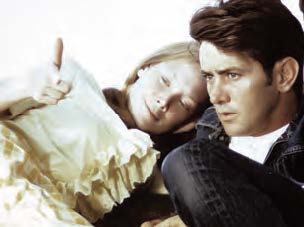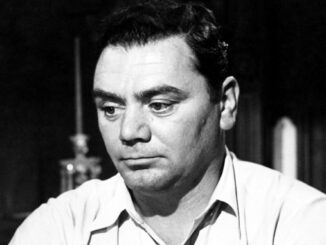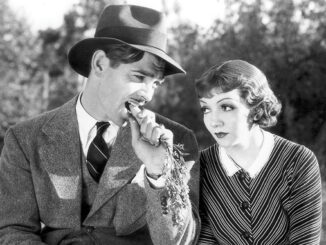
By Donovan Jacobs
It was the summer of 1974, and for my sister and me, there was a gross injustice in the world. I could tell you that the injustice involved saving the whales or impeaching Nixon—but we were entitled teenagers who lived near the beach and equated tanning with personal fulfillment; our outrage was over the fog being in all day.
In the wake of the sun continually letting us down, Allison and I convinced our mother, a secretary at UCLA, to bring us to work back-to-back days. Inevitably, Mom grew tired of entertaining us, so in the afternoons she sent us to the movies in Westwood Village.
You’ve probably seen that poster of Margot Robbie as Sharon Tate in “Once Upon a Time in Hollywood,” where she’s at the intersection of Weyburn and Broxton in Westwood, staring wistfully at the Bruin Theater with an ornate movie house (the Village) in the background. Instead of Margot and her microskirt, that was my sister and me standing in the same spot the first day, trying to decide which theater to go to.
We chose the Bruin, which was showing Steven Spielberg’s first studio feature “The Sugarland Express.” It was a perfectly fine summer movie: a kidnapped baby, car chases, Goldie Hawn with a Southern accent—you know the drill.
The next day, we went to the Village, which was screening Terence Malick’s “Badlands.” And it was not a typical summer movie.
“Badlands” opens in a small town in 1950s South Dakota, where perfectly coiffed garbage collector/slaughterhouse worker Kit (Martin Sheen) meets high school cheerleader Holly (Sissy Spacek) and… well, it’s hard to say what they feel for each other, though Holly’s narration insists they fall in love.
Holly’s father (Warren Oates) forbids Kit from seeing Holly. Kit shows up at Holly’s with a gun and the inevitable happens. Kit’s no criminal genius (he records his murder confession on a vinyl record, leaves it playing on a phonograph in the living room—then sets the house on fire) but he and Holly elude the cops during a “rampage” that feels as much accidental as homicidal.
Contrary to critics who think that Malick glorified Kit’s violent acts, I mainly remember from that afternoon experiencing the weird sensation that I wasn’t being told what to think—or more precisely, I was being allowed to interpret the characters and their actions for myself. Throughout “Badlands,” Kit and Holly remain frustratingly inarticulate, challenging the audience to draw meaning wherever it can.
And what images and sounds he chose. Malick’s portrait of nature struck me less as conventionally beautiful than electrifying. The shots of pulsing rivers, bristling groves of trees, elegant wild animals (contrasted with the cattle Kit slaughters) and menacing thunderheads over the prairie capture a fragile beauty in the world, helping define Kit and Holly as innocents, even as their crimes multiply. Malick frames the natural world through man’s presence, reminding us that Kit and Holly may not intend their actions but can’t escape their consequences.
I also recall Spacek’s eyes—uncertain of how to interpret Kit or his violence at first, then filled with a damning hardness as Kit’s hold on Holly falls away. Holly’s passivity felt like it put me in the role of judging Kit and Holly, especially when her expressions are juxtaposed with her narration’s mix of self-serving platitudes and withering honesty.
Obviously, I wasn’t thinking all this at 13 while stuffing my face with popcorn. But I distinctly remember walking out of the dark theater into a startlingly bright afternoon (the fog had finally burned off) and expressing to myself and my sister one of the best things a movie can make you say: “What the hell was that?”
“Badlands” didn’t inspire me to become a story analyst, but it helped me to appreciate movies that make you work, where the characters do and say things that aren’t cliched or easy to explain and where the filmmaker challenges the audience to articulate what the characters and their actions make us feel. It seems that out of that work comes a form of magic—a more profound understanding of life and people that doesn’t fade like a summer tan, but that can serve us all our lives as we strive to create and choose entertainment that is both entertaining and illuminating.
Donovan Jacobs is a Story Analyst. He can be reached at donovanjacobs442@ yahoo.com.





